Jia Tolentino in The New Yorker:
 Barbara Ehrenreich was born in Butte, Montana, where her family had lived for generations, in 1941. Most of her male ancestors lost fingers working in nearby copper mines. But her father attended night school, then won a scholarship to Carnegie Mellon; the family moved to Pittsburgh and rose into the middle class. Ehrenreich studied physics in college, got a doctorate in cell biology, and, in the late sixties, alongside her husband at the time, John Ehrenreich, she became involved in health-care organizing and antiwar activism.
Barbara Ehrenreich was born in Butte, Montana, where her family had lived for generations, in 1941. Most of her male ancestors lost fingers working in nearby copper mines. But her father attended night school, then won a scholarship to Carnegie Mellon; the family moved to Pittsburgh and rose into the middle class. Ehrenreich studied physics in college, got a doctorate in cell biology, and, in the late sixties, alongside her husband at the time, John Ehrenreich, she became involved in health-care organizing and antiwar activism.
In the decades since, Ehrenreich has tried, as a writer and an activist, to forge a bridge between the working and middle classes. She published her first two books—one on chemistry and one, co-written with her husband, about student protest—in 1969, and started attracting a wide audience in the nineteen-seventies, when she began writing for the influential feminist magazine Ms. She’s now published more than twenty books, including the 2001 bestseller “Nickel and Dimed,” about the daily indignities of low-wage work, and “Natural Causes,” a 2018 polemic about the wellness industry and the illusion of control. Her latest, “Had I Known: Collected Essays,” which brings together work from the past four decades, examines health, the economy, feminism, “bourgeois blunders,” God, science, and joy.
I recently visited Ehrenreich at home, in her fifth-floor condo outside Washington, D.C. Like her, the place was no-nonsense but welcoming. There were magazines on side tables, and shelves piled with books. She had broken her arm the previous weekend—“attacked,” she said, “by a laundry basket,” which she’d tripped over in the dark—and had enlisted a publicist at Twelve Books to pick up sandwiches and drinks for us. She asked over e-mail if I had any dietary preferences or restrictions, and I said that I valued all sandwiches but preferred one without mayonnaise, a choice that later became the subject of discussion. After selecting a turkey sandwich with mustard—Ehrenreich had chicken salad—I sat down with her in a small sunroom overlooking the Potomac River, with a peaceful view of our nation’s stressful capital. Ehrenreich nestled into a wicker love seat, propping her feet up, her right arm balanced gingerly in a sling. Later, as the coronavirus began shutting down the country, we spoke again, over the phone. These two conversations have been combined and edited for length and clarity.
More here.
 Here’s a deceptively simple exercise: Come up with a random phone number. Seven digits in a sequence, chosen so that every digit is equally likely, and so that your choice of one digit doesn’t affect the next. Odds are, you can’t. (But don’t take my word for it: Studies dating back to the 1950s reveal how mathematically nonrandom we are, even if we don’t recognize it.)
Here’s a deceptively simple exercise: Come up with a random phone number. Seven digits in a sequence, chosen so that every digit is equally likely, and so that your choice of one digit doesn’t affect the next. Odds are, you can’t. (But don’t take my word for it: Studies dating back to the 1950s reveal how mathematically nonrandom we are, even if we don’t recognize it.)
 Sadly, you know that your side is losing the war of ideas when they start handing propaganda victories to the side you despise on a platter. Three years ago, in the context of a Lee statue that was going to be taken down, after that terrible anti-Semitic Charlottesville rally by white supremacists, Trump made a loathsome remark about there being “fine people” on all sides and also asked a journalist that if it was Lee today, would it be Jefferson or Washington next? I of course dismissed Trump’s remark as racist and ignorant; he would not be able to recite the Declaration of Independence if it came wafting down at him in a MAGA hat. But now I am horrified that liberals are providing him with ample ammunition by validating his words. A protest in San Francisco toppled a statue of Ulysses S. Grant – literally the man who defeated the Confederacy and destroyed the first KKK – and
Sadly, you know that your side is losing the war of ideas when they start handing propaganda victories to the side you despise on a platter. Three years ago, in the context of a Lee statue that was going to be taken down, after that terrible anti-Semitic Charlottesville rally by white supremacists, Trump made a loathsome remark about there being “fine people” on all sides and also asked a journalist that if it was Lee today, would it be Jefferson or Washington next? I of course dismissed Trump’s remark as racist and ignorant; he would not be able to recite the Declaration of Independence if it came wafting down at him in a MAGA hat. But now I am horrified that liberals are providing him with ample ammunition by validating his words. A protest in San Francisco toppled a statue of Ulysses S. Grant – literally the man who defeated the Confederacy and destroyed the first KKK – and  Barbara Ehrenreich was born in Butte, Montana, where her family had lived for generations, in 1941. Most of her male ancestors lost fingers working in nearby copper mines. But her father attended night school, then won a scholarship to Carnegie Mellon; the family moved to Pittsburgh and rose into the middle class. Ehrenreich studied physics in college, got a doctorate in cell biology, and, in the late sixties, alongside her husband at the time, John Ehrenreich, she became involved in health-care organizing and antiwar activism.
Barbara Ehrenreich was born in Butte, Montana, where her family had lived for generations, in 1941. Most of her male ancestors lost fingers working in nearby copper mines. But her father attended night school, then won a scholarship to Carnegie Mellon; the family moved to Pittsburgh and rose into the middle class. Ehrenreich studied physics in college, got a doctorate in cell biology, and, in the late sixties, alongside her husband at the time, John Ehrenreich, she became involved in health-care organizing and antiwar activism. Initially, the street was named after a British doctor/spy named James Burnes. Although the name was changed to Muhammad Bin Qasim Road Post-Partition, it is still known as Burns Road or more affectionately, “Buns Road”. But the neighborhoods around Burns Road are considered to have housed the earliest settlements in the city of Karachi, dating back to 1857.
Initially, the street was named after a British doctor/spy named James Burnes. Although the name was changed to Muhammad Bin Qasim Road Post-Partition, it is still known as Burns Road or more affectionately, “Buns Road”. But the neighborhoods around Burns Road are considered to have housed the earliest settlements in the city of Karachi, dating back to 1857.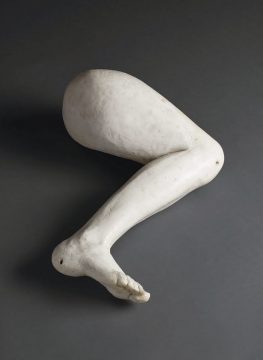 Biography drags after Szapocznikow like a phantom limb, threatening to eclipse a practice as rooted in materiality and experiment as it is in the individual life experience of a body and mind. Born to a Jewish family in Kalisz, Poland, in 1926, she survived two ghettos and three concentration camps, as well as tuberculosis, before dying of breast cancer at age forty-six. Her work has frequently suffered from being interpreted too literally, theorized as representations of trauma or of psychic wounds. But every encounter I’ve had demands the opposite: The abstracted figuration Szapocznikow pursued in this later work, which hovers between the real body and its imagined or felt states, demands nuanced reading. We have the body truncated, unheroic, beguiling, as in her colored polyester resin lamps, mouths, and breasts lit from within—glowing sentinels pink, flesh colored, black, crimson. The body that grows where it shouldn’t, whose parts we cannot integrate, appears unnatural but unsettlingly erotic, tactile, as in two works titled Tumeur (Tumor), both made around 1970, consisting of lumpy mounds of resin and gauze, with ruby-red lips straining to the surface from within.
Biography drags after Szapocznikow like a phantom limb, threatening to eclipse a practice as rooted in materiality and experiment as it is in the individual life experience of a body and mind. Born to a Jewish family in Kalisz, Poland, in 1926, she survived two ghettos and three concentration camps, as well as tuberculosis, before dying of breast cancer at age forty-six. Her work has frequently suffered from being interpreted too literally, theorized as representations of trauma or of psychic wounds. But every encounter I’ve had demands the opposite: The abstracted figuration Szapocznikow pursued in this later work, which hovers between the real body and its imagined or felt states, demands nuanced reading. We have the body truncated, unheroic, beguiling, as in her colored polyester resin lamps, mouths, and breasts lit from within—glowing sentinels pink, flesh colored, black, crimson. The body that grows where it shouldn’t, whose parts we cannot integrate, appears unnatural but unsettlingly erotic, tactile, as in two works titled Tumeur (Tumor), both made around 1970, consisting of lumpy mounds of resin and gauze, with ruby-red lips straining to the surface from within. They blew up the mausoleum—or tried to—during a live broadcast on Bulgarian national television on August 21, 1999. It was a hot and cloudless day in the capital city of Sofia, perfect weather for a demolition. Ten years after the collapse of the country’s Communist regime there was still unfinished business to take care of. The mausoleum’s one and only occupant, the mummy of Georgi Dimitrov, “the Great Leader and Teacher of the Bulgarian People,” had already been removed from its glass sarcophagus, then cremated and buried at Sofia’s Central Cemetery. Now the tomb had to go.
They blew up the mausoleum—or tried to—during a live broadcast on Bulgarian national television on August 21, 1999. It was a hot and cloudless day in the capital city of Sofia, perfect weather for a demolition. Ten years after the collapse of the country’s Communist regime there was still unfinished business to take care of. The mausoleum’s one and only occupant, the mummy of Georgi Dimitrov, “the Great Leader and Teacher of the Bulgarian People,” had already been removed from its glass sarcophagus, then cremated and buried at Sofia’s Central Cemetery. Now the tomb had to go. Bird omens once warned the ancients of the future. In Greece and Rome, for example, avian augury involved seers trained in the art of reading the flight of birds, who sought to make sense of a chaotic world through decoding messages from the gods. Since bird omens—or “auspices,” Latin for this kind of divination—often warned of disaster, ignoring or misreading them could be catastrophic. Ancient audiences watched tragedy unfold when hubristic rulers disregarded their augurs’ reading of these omens. (The two eagles that violently destroy a pregnant hare at the beginning of Aeschylus’s play Agamemnon, for example, forecast a Greek victory but prompt Agamemnon’s sacrifice of his daughter Iphigenia, leading, in turn, to his murder at the hands of his wife, Clytemnestra.) The legacy of bird divination is etymologically evident in such words as augury, inauguration, and auspicious (from the Latin augur and auspex). Birds, it seems, continue to point to the future.
Bird omens once warned the ancients of the future. In Greece and Rome, for example, avian augury involved seers trained in the art of reading the flight of birds, who sought to make sense of a chaotic world through decoding messages from the gods. Since bird omens—or “auspices,” Latin for this kind of divination—often warned of disaster, ignoring or misreading them could be catastrophic. Ancient audiences watched tragedy unfold when hubristic rulers disregarded their augurs’ reading of these omens. (The two eagles that violently destroy a pregnant hare at the beginning of Aeschylus’s play Agamemnon, for example, forecast a Greek victory but prompt Agamemnon’s sacrifice of his daughter Iphigenia, leading, in turn, to his murder at the hands of his wife, Clytemnestra.) The legacy of bird divination is etymologically evident in such words as augury, inauguration, and auspicious (from the Latin augur and auspex). Birds, it seems, continue to point to the future. By returning to the Victorian origins of the laws of thermodynamics, we can see how—and, perhaps, why—those laws have been broadly misconstrued and misapplied. In the 19th century, the first textbooks on the science of thermodynamics emerged from the work of Rudolf Clausius, in Berlin, as well as William Thomson (often called Lord Kelvin) and William Rankine, both in Glasgow. Studying how machines, such as steam engines, could exchange heat for mechanical work and vice-versa, these physicists learned of strict limits on efficiency. The best a machine could possibly do was to give up a small amount of energy as wasted heat. They also observed that if you had something that was hot on one side but cold on the other, the temperature would always even out. Their results were synthesized in the first two laws:
By returning to the Victorian origins of the laws of thermodynamics, we can see how—and, perhaps, why—those laws have been broadly misconstrued and misapplied. In the 19th century, the first textbooks on the science of thermodynamics emerged from the work of Rudolf Clausius, in Berlin, as well as William Thomson (often called Lord Kelvin) and William Rankine, both in Glasgow. Studying how machines, such as steam engines, could exchange heat for mechanical work and vice-versa, these physicists learned of strict limits on efficiency. The best a machine could possibly do was to give up a small amount of energy as wasted heat. They also observed that if you had something that was hot on one side but cold on the other, the temperature would always even out. Their results were synthesized in the first two laws: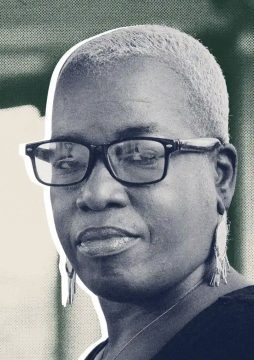 On 22 February 2002, Sgt Jacklean Davis was on a walk with her supervisor, Lt Samuel Lee, when Lee got a call from their commander at the seventh district in
On 22 February 2002, Sgt Jacklean Davis was on a walk with her supervisor, Lt Samuel Lee, when Lee got a call from their commander at the seventh district in 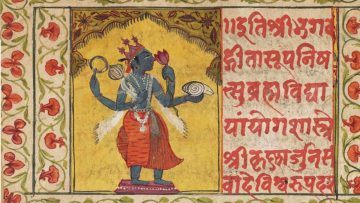 The Upanishads, then, can hardly be called originary. They sound more like the latest in a series of disagreements; a great deal has preceded them, and reached a state of ossification before their arrival. Among what they challenge is a particular sense of causality regarding the relationship between creation and creator, which seems to have been extant when they were composed. Many traditions believe in a first cause, after which the universe comes into existence and before which there was nothing. The Upanishad’s conception of consciousness – “He moves, and he moves not”; “He is far, and he is near” – complicates the point of origin. Again, unlike Descartes’s belief that thought is both a product and a proof of existence, the Upanishad’s “What cannot be thought with the mind, but that whereby the mind can think” introduces an absence at the heart of thought. If thought can’t conceive whatever it is that produces it, then thought can’t be wholly present – a formulation that’s antithetical to the Cartesian proclamation. And since causality constantly reasserts itself as a default mode of thinking throughout history, the Upanishads remain, essentially, oppositional. They can’t occupy the space of established thought, being opposed to that space. Nor can one reduce either the Upanishads or the Gita in sociological terms to being “Brahminical” without losing sight of the fact that their language is critical-poetic – that is, they raise a critique through paradox and metaphor – rather than dogmatic or hieratic.
The Upanishads, then, can hardly be called originary. They sound more like the latest in a series of disagreements; a great deal has preceded them, and reached a state of ossification before their arrival. Among what they challenge is a particular sense of causality regarding the relationship between creation and creator, which seems to have been extant when they were composed. Many traditions believe in a first cause, after which the universe comes into existence and before which there was nothing. The Upanishad’s conception of consciousness – “He moves, and he moves not”; “He is far, and he is near” – complicates the point of origin. Again, unlike Descartes’s belief that thought is both a product and a proof of existence, the Upanishad’s “What cannot be thought with the mind, but that whereby the mind can think” introduces an absence at the heart of thought. If thought can’t conceive whatever it is that produces it, then thought can’t be wholly present – a formulation that’s antithetical to the Cartesian proclamation. And since causality constantly reasserts itself as a default mode of thinking throughout history, the Upanishads remain, essentially, oppositional. They can’t occupy the space of established thought, being opposed to that space. Nor can one reduce either the Upanishads or the Gita in sociological terms to being “Brahminical” without losing sight of the fact that their language is critical-poetic – that is, they raise a critique through paradox and metaphor – rather than dogmatic or hieratic.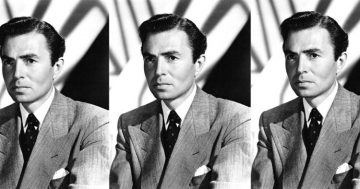 The secondary characters are extraordinary. As Penn State media professor Kevin Hagopian puts it in his film notes for the New York State Writers Institute, Odd Man Out is “festooned with gargoyles.” The crazed painter Lukey (Robert Newton) sees in Johnny’s suffering face the perfect model for a masterpiece of portraiture. With the bearing of a genteel bordello mistress, treacherous Theresa O’Brien (Maureen Delany) lets two of the bandits drink her whiskey in one room, while in another she informs the police of their whereabouts. Dim-witted Shell (F. J. McCormick), who collects birds and speaks in avian metaphors, discovers Johnny in a rubbish heap and relishes the reward he will get for turning in this bird with the wounded left wing. But Father Tom (W. G. Fay) persuades Shell that there is a greater reward than money and it is called Faith. When Shell wonders what Faith is, his roommate, a medical student, says, “It’s life.”
The secondary characters are extraordinary. As Penn State media professor Kevin Hagopian puts it in his film notes for the New York State Writers Institute, Odd Man Out is “festooned with gargoyles.” The crazed painter Lukey (Robert Newton) sees in Johnny’s suffering face the perfect model for a masterpiece of portraiture. With the bearing of a genteel bordello mistress, treacherous Theresa O’Brien (Maureen Delany) lets two of the bandits drink her whiskey in one room, while in another she informs the police of their whereabouts. Dim-witted Shell (F. J. McCormick), who collects birds and speaks in avian metaphors, discovers Johnny in a rubbish heap and relishes the reward he will get for turning in this bird with the wounded left wing. But Father Tom (W. G. Fay) persuades Shell that there is a greater reward than money and it is called Faith. When Shell wonders what Faith is, his roommate, a medical student, says, “It’s life.” A “
A “ Imagine: You pop a pill into your mouth and swallow it. It dissolves, releasing tiny particles that are absorbed and cause only cancerous cells to secrete a specific protein into your bloodstream. Two days from now, a finger-prick blood sample will expose whether you’ve got cancer and even give a rough idea of its extent. That’s a highly futuristic concept. But its realization may be only years, not decades, away.
Imagine: You pop a pill into your mouth and swallow it. It dissolves, releasing tiny particles that are absorbed and cause only cancerous cells to secrete a specific protein into your bloodstream. Two days from now, a finger-prick blood sample will expose whether you’ve got cancer and even give a rough idea of its extent. That’s a highly futuristic concept. But its realization may be only years, not decades, away. 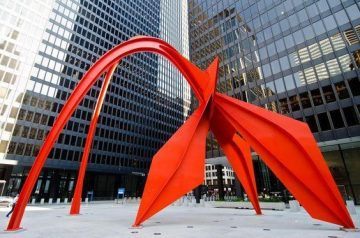 Morgan Meis: Reading your second volume, I got a feeling that sometimes you struggled – as I think everyone has struggled – with where to place Calder in art history. Do you feel you reached a conclusion on that?
Morgan Meis: Reading your second volume, I got a feeling that sometimes you struggled – as I think everyone has struggled – with where to place Calder in art history. Do you feel you reached a conclusion on that?